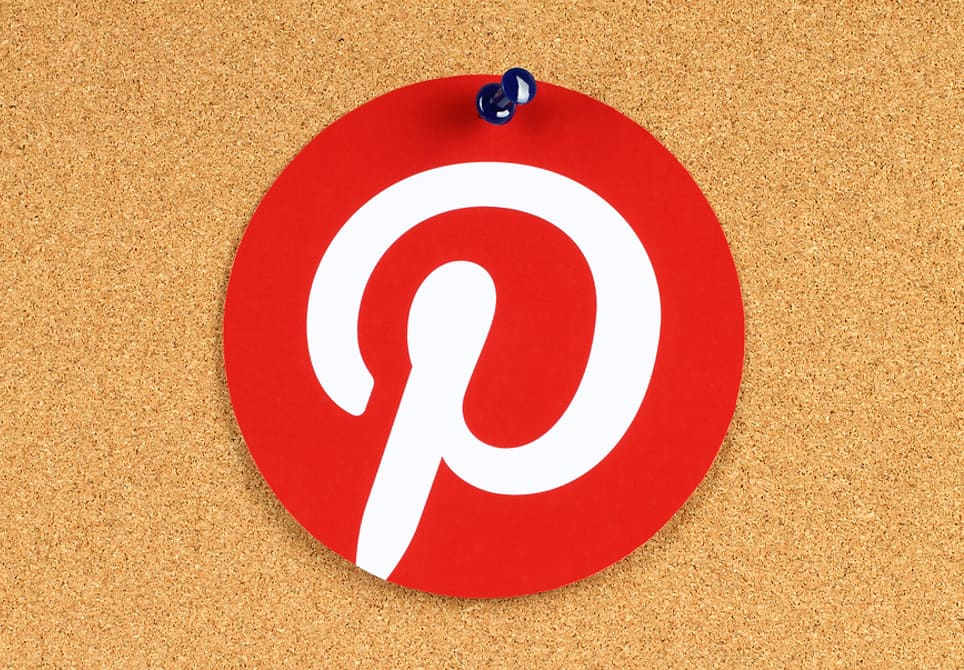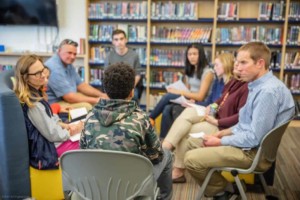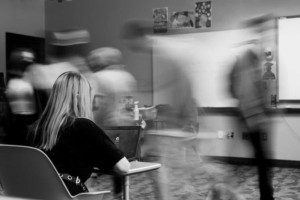How To Effectively Integrate Pinterest Into Your Classroom

By Corinne Hyde, Ed.D.
Over the past few years, social media has become a central part of most people’s daily routine, both personally and professionally.
Users turn to their platform of choice to connect with others across the world, as well as educate themselves about specific topics.
With this rapid growth of social media use, it is no surprise that these technologies have also made their mark in the classroom.
Teachers use social media in transformative ways to help their students think and learn, while also taking advantage of modernized tools to enhance their colleagues’ lives. If we have learned nothing else during the rise in popularity of these platforms, it is that the intersecting world of education and social media is here to stay.
Since social media (however it evolves) will undoubtedly play an important role in classrooms for years to come, it’s crucial that all current and future educators understand how to use it as a strategy for both meeting learning objectives and becoming connected to the global educational community.
For example, teachers have been flocking to Pinterest for classroom and learning inspiration and, in turn, Pinterest has developed dedicated tools for education. Given its multitude of features, Pinterest allows for ideal opportunities for student learning.
Because of the more than 500,000 education-related pins in the Teachers on Pinterest space, USC Rossier Online created The Guide to Pinterest for Educators. This helpful guide provides teachers and administrators with the tools needed to not only navigate Pinterest, but to use the social platform as a powerful learning tool for both teachers and students. For example, here are a few ways in which teachers can engage students through Pinterest right in the classroom.
Creative Team Brainstorming
Students can easily search for ideas on their topic and gain inspiration from the resources and colorful images they find. This works especially well for visual projects. Students can pin the kind of work they’d like to emulate in shape, content or form, as well as create a portfolio of the artists and designers that inspire them.
Other kinds of creative projects are also fair game. There are many different kinds of science experiments and Maker projects available. Students can find creative inspiration for just about every discipline. Teachers can give them a few guidelines and send them sleuthing.
Research Projects
Pinterest is also a treasure trove for research projects. If students are researching the history of the suffragist movement, each student can create a suffragist board where they can pin research, YouTube videos and pictures from both Pinterest and around the Internet. When they’re ready to take their project to the writing or presentation stage, they’ll have everything they need in one organized, visually intuitive place.
On a more metacognitive level, having students use Pinterest for research will foster both digital literacy and modern research skills. Working with Pinterest provides educators with an opportunity to engage in organic discussions about what makes a good source, where one can find good sources, how to gather counter-perspectives and what kinds of resources exist online.
Digital Student Portfolios & Peer Feedback
Another excellent idea is to have every student create a portfolio board at the beginning of the year. Whenever the student turns in impressive work, teachers can suggest that the student pins it to their portfolio board. The board itself can become a comprehensive digital portfolio at the end of the year, or it can become the source for putting together a more formal portfolio outside of Pinterest.
In addition, students can give and receive high quality feedback in the comments area directly on individual pins. As with other peer feedback approaches, leaving feedback in Pinterest comments should start with a lesson on constructive criticism.
These are just a few ways teachers can integrate Pinterest into their instructional practices. Implementing these tools and strategies in the classroom will allow both educators and students to put Pinterest to more effective use, while spurring new, creative and engaging ways to learn.
One Last Thing…
Using a social media platform like Pinterest in the classroom is the perfect time to also teach students about copyright and digital rights, as well as the difference between sharing and taking credit for all of the photos, videos and music files they engage with online.
Today’s students were born into a different technological landscape than their teachers. However, just because they are frequent users of technology does not mean they will organically develop the digital literacy skills they need in order to become well educated global citizens. It’s easy for students to think that the material they find on the Internet belongs to them, even more so if they are pinning content, which can make the material feel like something they’ve created.
We encourage teachers to take this opportunity to discuss intellectual property, copyright and digital rights in general. They can also engage students in active lessons about the nuances of sharing, mashups, inspiration, homage and taking and giving credit. It would also be helpful to direct students to a few sites where they can reprint materials for free, like the Library of Congress or Flickr Creative Commons.
For more, see:
Corinne Hyde, Ed.D. is an associate teaching professor of clinical education at USC Rossier Online. Follow her on Twitter: @DrCorinneHyde.
Stay in-the-know with all things EdTech and innovations in learning by signing up to receive the weekly Smart Update. This post includes mentions of a Getting Smart partner. For a full list of partners, affiliate organizations and all other disclosures please see our Partner page.






0 Comments
Leave a Comment
Your email address will not be published. All fields are required.